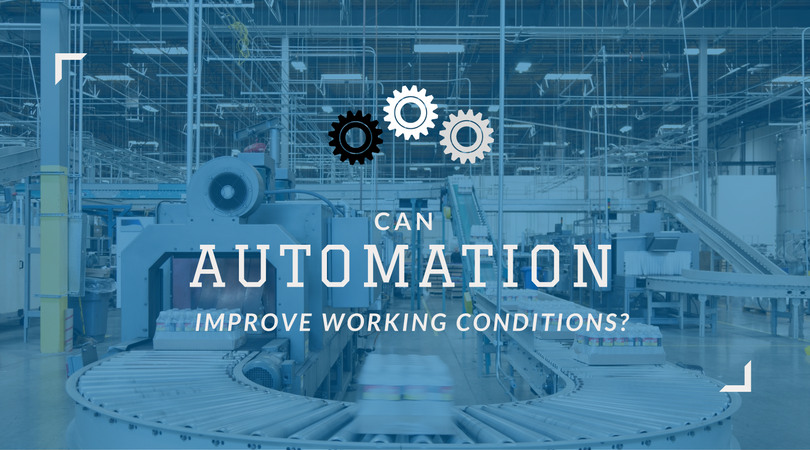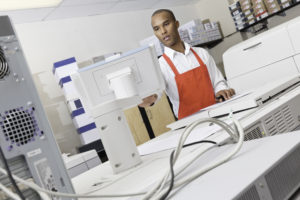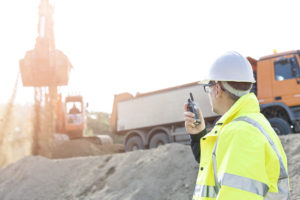 Automation, robots and artificial intelligence are making an impact these days and there’s no denying how innovative the technology can and will be. Even with the list of benefits, technology can disrupt a variety of industries.
Automation, robots and artificial intelligence are making an impact these days and there’s no denying how innovative the technology can and will be. Even with the list of benefits, technology can disrupt a variety of industries.
Robots can flip burgers, automate warehouses for companies like Amazon and, thanks to AI, they can even handle basic bookkeeping and accounting tasks. Even after automating manual labor and clerical tasks, we’re merely scratching the surface of what this technology can do – — the possibilities are nearly endless.
As a result, it’s no surprise that there is a growing fear of robots and computers coming for our jobs.
There are organizations that can replace their workforce for a fraction of the cost. Machines never grow weary, unmotivated or uninterested. They can be programmed to work at a certain pace and keep up that pace for their entire lifetime, barring mechanical or software issues.
Robots are reliable, efficient and mass-producible so it sheds light on why this shift can happen. But with these technologies replacing so much human labor, there’s sure to be a shortage. What are you supposed to do going forward? Will you lose your job, or even your career, to modern technology?
While change can certainly be scary in the face of something like this, we’re here to tell you that there are two sides to this story. Yes, there will be jobs and opportunities lost, but new ones will certainly be created. It’s neither the end of human labor as we know it nor the “automation apocalypse,” as some are calling it.
Automation Will Improve Working Conditions & Create New Opportunities
 For every piece of technology, automation system or computer that’s put into place, there is a need for someone to maintain and run that system. Computers and technology are great at automation when they’re set in motion, but if something happens, they cannot fix themselves. Most of the time it takes a team of people to find the solution — not just one solitary worker.
For every piece of technology, automation system or computer that’s put into place, there is a need for someone to maintain and run that system. Computers and technology are great at automation when they’re set in motion, but if something happens, they cannot fix themselves. Most of the time it takes a team of people to find the solution — not just one solitary worker.
Plus, thanks to the cost benefits of an automated workforce, companies and businesses are able to lower their costs of goods while increasing their profit margins.. This leads to increased sales, ensuring more jobs opening up to help with the demands of a booming business.
Amazon is a great example of this. Despite increasing the number of robots working in their warehouses from 1,400 to 45,000, it has continued to hire workers at the same rate and capacity. Human labor is still necessary and likely will be for quite some time. In many cases, technology cannot thrive without flesh-and-blood support.
According to several studies, just a single warehouse for an online retailer — like Amazon, Overstock or Walmart — can have over 4,000 workers employed within. This means that even though some jobs will go away, more will crop up in their place.
But it will also improve working conditions for many. Think of all the tedious and mundane tasks that can be automated and handled by a computer system. We’re willing to bet there are some duties you’d much rather hand over to a robot — one that would never tire or get bored. Or complain.
 Robots and automation systems can take over dangerous tasks, as well. This will help improve worker safety. In the manufacturing and construction industries, for example, automation can be used to ensure that dangerous equipment isn’t handled by human labor — like an automatic welder that runs into operational problems.
Robots and automation systems can take over dangerous tasks, as well. This will help improve worker safety. In the manufacturing and construction industries, for example, automation can be used to ensure that dangerous equipment isn’t handled by human labor — like an automatic welder that runs into operational problems.
In the case of the welder, a worker or engineer overseeing the equipment wouldn’t be required to get up close and personal to fix an issue, which is a good thing if it sparks or catches fire accidentally.
Safety will also get a boost because robots aren’t affected by fatigue. It’s entirely possible for human workers to make more mistakes or incur injuries because they are physically or mentally exhausted.That cannot happen with robots or computers.
Before you start looking at the robot movement as an “apocalypse” for human labor, consider that it offers benefits, too. You may actually find yourself still working in the same position, for the same company, but with a little more help.
Written by Megan Ray Nichols from Schooled by Science
